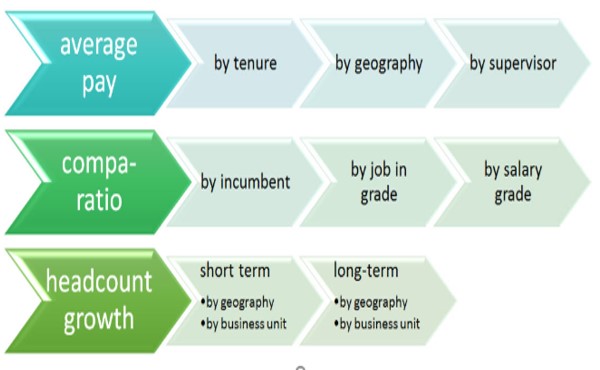
EMPLOYEE COMPENSATION AND BENEFITS ANALYTICS

OVERVIEW
Strategically using workforce analytics to optimize salaries and rewards can help HR positively impact the bottom line while also providing employees with fair wages. A CEB (Corporate Leadership Council) study found that when organizations lead in HR analytics, their talent outcomes improved by 12% leading to a 4% improvement in gross profit margin, that's about $12.8 million in savings for every $1 billion in revenue.
Apply a consistent, robust business decision-making framework that includes analytics and current descriptive statistics.
SOLUTION COMPONENTS
Tracking and monitoring of salary distribution at organization level (such as Department, Position, Experience etc).
Tracking and monitoring of salary distribution among current Employees on basis of demographic attributes (such as Gender, Location, Marital status etc).
Compare the trends between last year and current year salaries.
Compare the salaries offered to employees hired from different hiring source.
Top termination reasons of employees in different departments as per there performance score.
Manager and his/her team analysis in terms of performance and salary.
Advanced unsupervised Analytical algorithm (Hierarchal, K-mean clustering) to identify the cluster of employees having same characteristics. System can select the potential employee from a pool of employees.

BENEFITS
Easy monitoring and tracking of salary distribution in the organization.
Compare the industry salary trend with organization salary trend.
Align the organization salary trend for new hiring's on the basis of their demographic and professional attribute.
Identify the most profitable hiring source.
Analyze the termination reason among different departments and discuss with departments head.